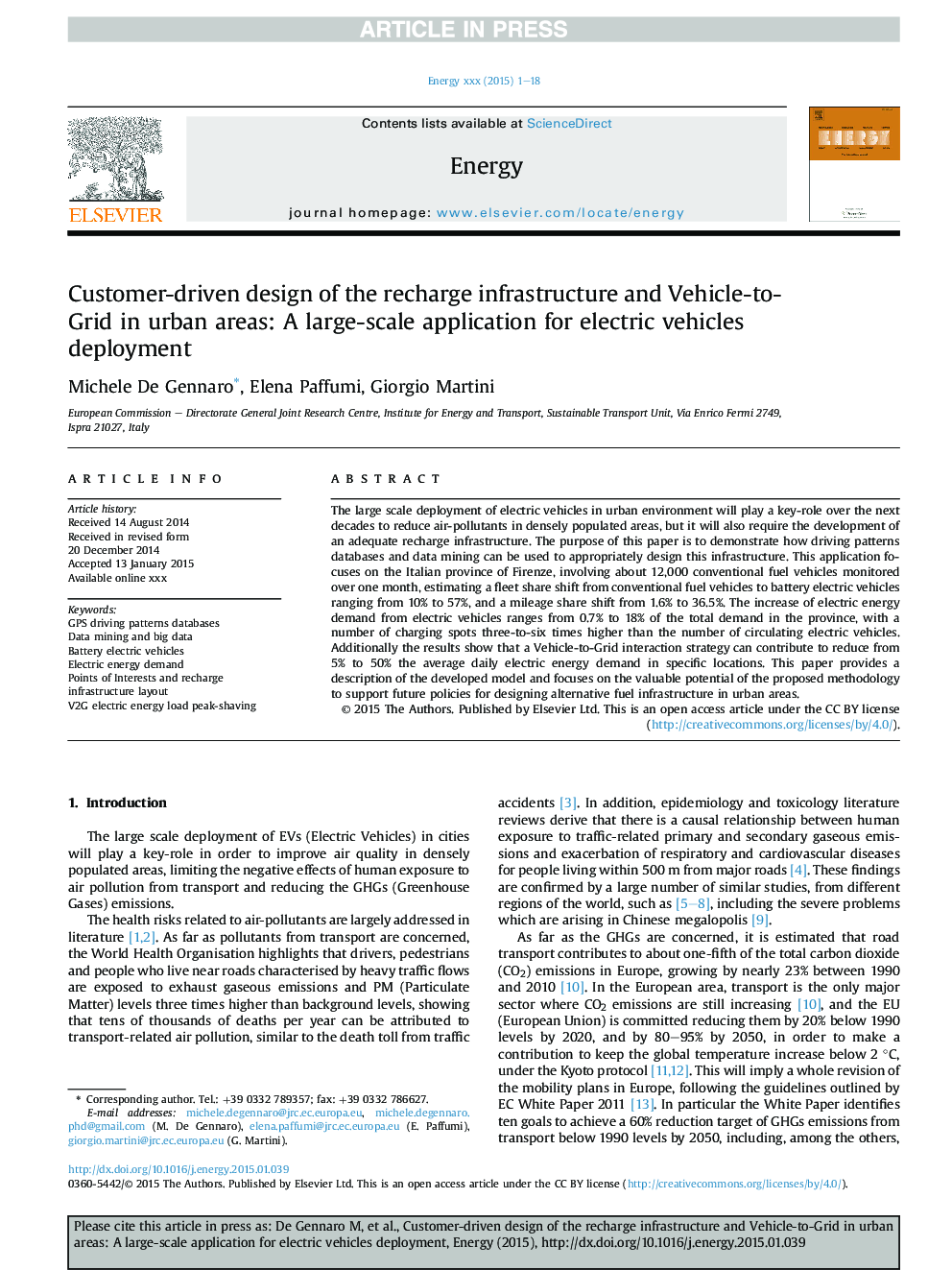| Article ID | Journal | Published Year | Pages | File Type |
|---|---|---|---|---|
| 8075227 | Energy | 2015 | 18 Pages |
Abstract
The large scale deployment of electric vehicles in urban environment will play a key-role over the next decades to reduce air-pollutants in densely populated areas, but it will also require the development of an adequate recharge infrastructure. The purpose of this paper is to demonstrate how driving patterns databases and data mining can be used to appropriately design this infrastructure. This application focuses on the Italian province of Firenze, involving about 12,000 conventional fuel vehicles monitored over one month, estimating a fleet share shift from conventional fuel vehicles to battery electric vehicles ranging from 10% to 57%, and a mileage share shift from 1.6% to 36.5%. The increase of electric energy demand from electric vehicles ranges from 0.7% to 18% of the total demand in the province, with a number of charging spots three-to-six times higher than the number of circulating electric vehicles. Additionally the results show that a Vehicle-to-Grid interaction strategy can contribute to reduce from 5% to 50% the average daily electric energy demand in specific locations. This paper provides a description of the developed model and focuses on the valuable potential of the proposed methodology to support future policies for designing alternative fuel infrastructure in urban areas.
Keywords
Related Topics
Physical Sciences and Engineering
Energy
Energy (General)
Authors
Michele De Gennaro, Elena Paffumi, Giorgio Martini,
